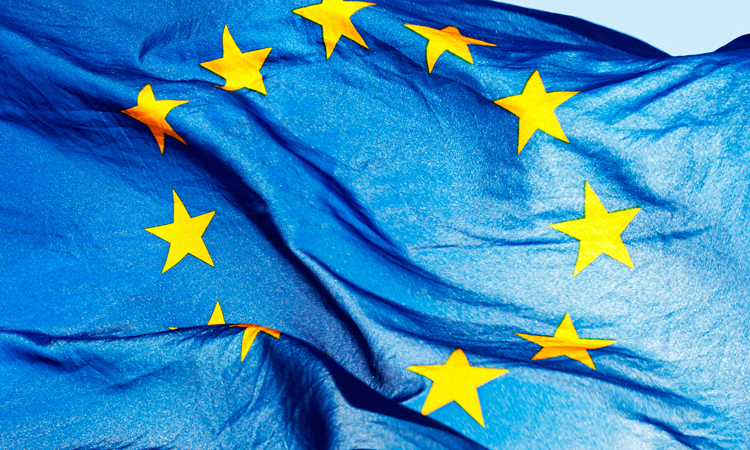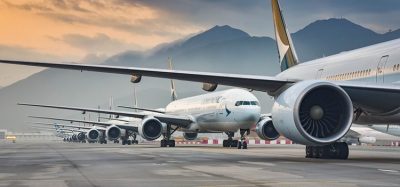Europe’s airports report almost 100 per cent fall in passenger numbers
- Like
- Digg
- Del
- Tumblr
- VKontakte
- Buffer
- Love This
- Odnoklassniki
- Meneame
- Blogger
- Amazon
- Yahoo Mail
- Gmail
- AOL
- Newsvine
- HackerNews
- Evernote
- MySpace
- Mail.ru
- Viadeo
- Line
- Comments
- Yummly
- SMS
- Viber
- Telegram
- Subscribe
- Skype
- Facebook Messenger
- Kakao
- LiveJournal
- Yammer
- Edgar
- Fintel
- Mix
- Instapaper
- Copy Link
Posted: 9 June 2020 | International Airport Review | No comments yet
ACI Europe data has outlined that only 4.3 million passengers travelled through the vast network of European airports during May 2020.


Airports Council International (ACI) Europe has reported that Europe’s airports continued to be at an almost complete stand-still during May 2020, with passenger traffic down by 98 per cent when compared to the same period in 2019. As a result, only 4.3 million passengers travelled through the European network – consisting of over 500 airports – in May 2020, compared to 216.8 million in May 2019.
Director General of ACI Europe, Olivier Jankovec, said: “With well over half a billion passengers lost so far this year, and still no revenues coming in, Europe’s airports are anxiously waiting for travel restrictions to be lifted and airlines to resume operations. With the epidemic now de-escalating in many countries and a plan to allow for intra-European travel – at least within the Schengen area – by the end of the month, we are finally seeing some light at the end of the tunnel.”
He continued: “But there is no escape that the recovery will be slow and gradual – and that the post-COVID-19 aviation market will be fundamentally disrupted and structurally very different. For now, we do not see a return to last year’s traffic volumes before 2023. Most national authorities are quite rightly taking a phased approach, but it’s vitally important that devices such as quarantine are risk-based and proportionate. If quarantine is used as a blunt instrument as it is in the UK, it is one which will deliver an economic and social blow from which we will all struggle to recover.”
All of this shows that Europe’s airports, along with airlines, are amongst the sectors hardest hit by COVID-19, and that government support is needed for them to recover. Such support is essential not just to restore the air connectivity that is underpinning the livelihood of communities, businesses and citizens – but also to safeguard the ability of both airports and airlines to invest and decarbonise.
However, governments across Europe have almost exclusively helped airlines, with more than €24 billion of financial support already approved – and with more to come. Meanwhile, and apart from a few exceptions, airports have been excluded from national aid programmes for aviation. Airports have generally benefited only from temporary unemployment schemes, leaving them in an extremely difficult financial situation.
Jankovec commented: “Keeping airlines afloat – or, rather, flying – is obviously in the interest of airports. But this does not necessarily secure their financial viability. With selective governmental support not benefiting all airlines, and with no condition attached for recipient airlines to support their suppliers – including airports – the current situation creates huge imbalances in the air transport eco-system. This essentially brings us back to the era when the interest of airlines used to command aviation policy, with no consideration for other industry stakeholders – let alone consumers.”
ACI Europe – together with the national airport associations of Germany, France and Italy – called on governments and the European Union (EU) to address these imbalances and safeguard the proper functioning of the Single Aviation Market by using all other instruments available for that purpose. This should include:
- Allowing airports to benefit from temporary unemployment schemes under the most favourable conditions and beyond the summer months – this is crucial to contain permanent layoffs and retain skilled staff
- Granting financial compensation to airports for the costs involved in remaining open when travel restrictions eliminated demand for air transport, as well as for the costs involved in implementing sanitary measures
- Ensuring the timely return of slots not used by airlines, so as to allow airports to limit costs by effectively adjusting resources and staffing to the actual level of airline operations – this would also allow for the timely reallocation of unused slots to other airlines, thus benefitting air connectivity
- Ensuring that charges paid by airlines for the use of airport facilities better reflect underlying costs, as per the “user pays” principle advocated by the European Commission for transport infrastructure – in particular, under-recovered costs must be carried forward into future regulatory periods.
Airline dominance is set to become the norm in the post-COVID-19 aviation market, as already evidenced by the way prominent airlines are conditioning the restart of their operations to either free use or massive discounts on airport charges. The revision of the EU Airport Charges Directive does not take this new reality into consideration and needs to be reconsidered to avoid further imbalances in the air transport ecosystem.
Related topics
Aeronautical revenue, Airport crisis management, COVID-19, Non-aeronautical revenue, Passenger volumes


















